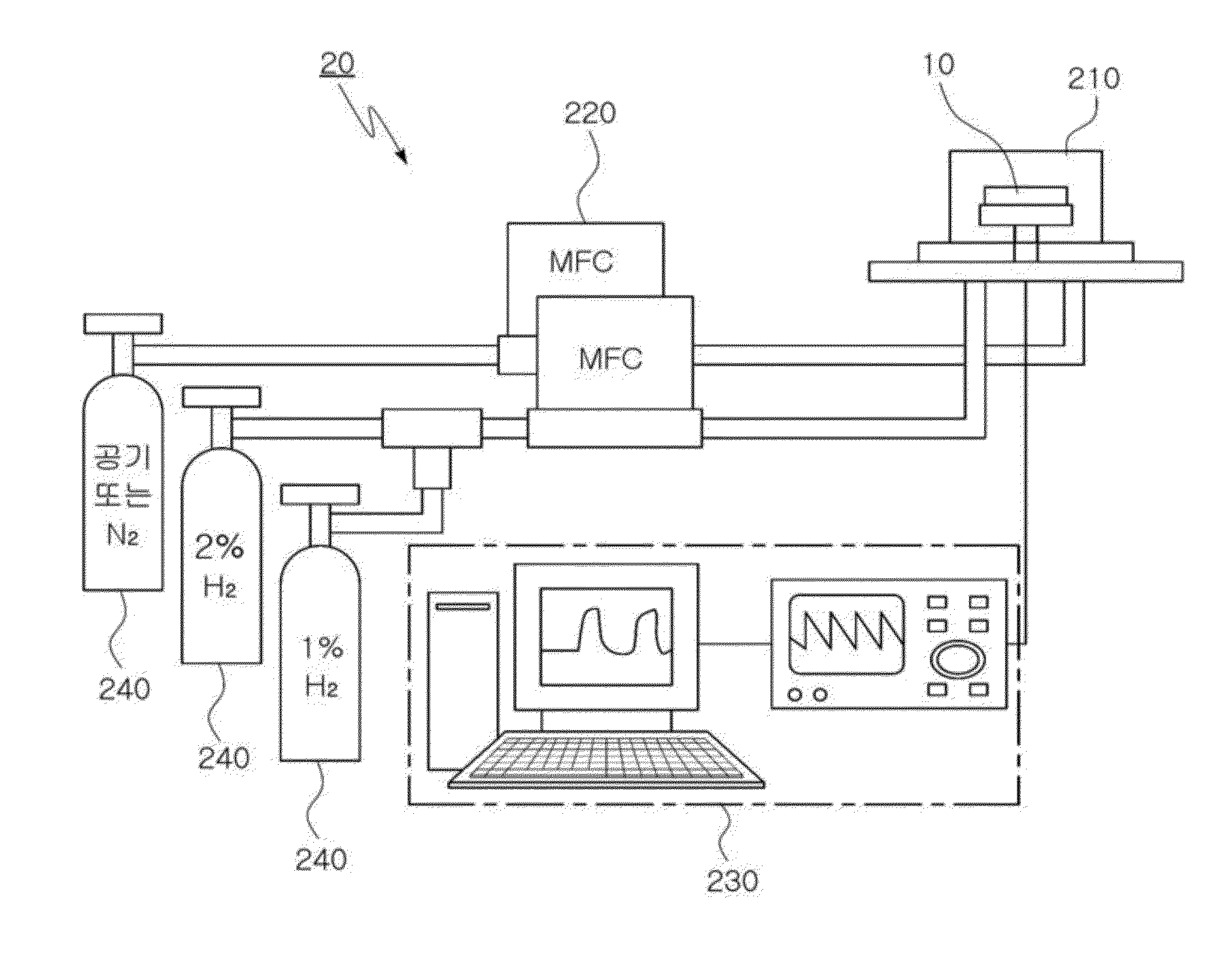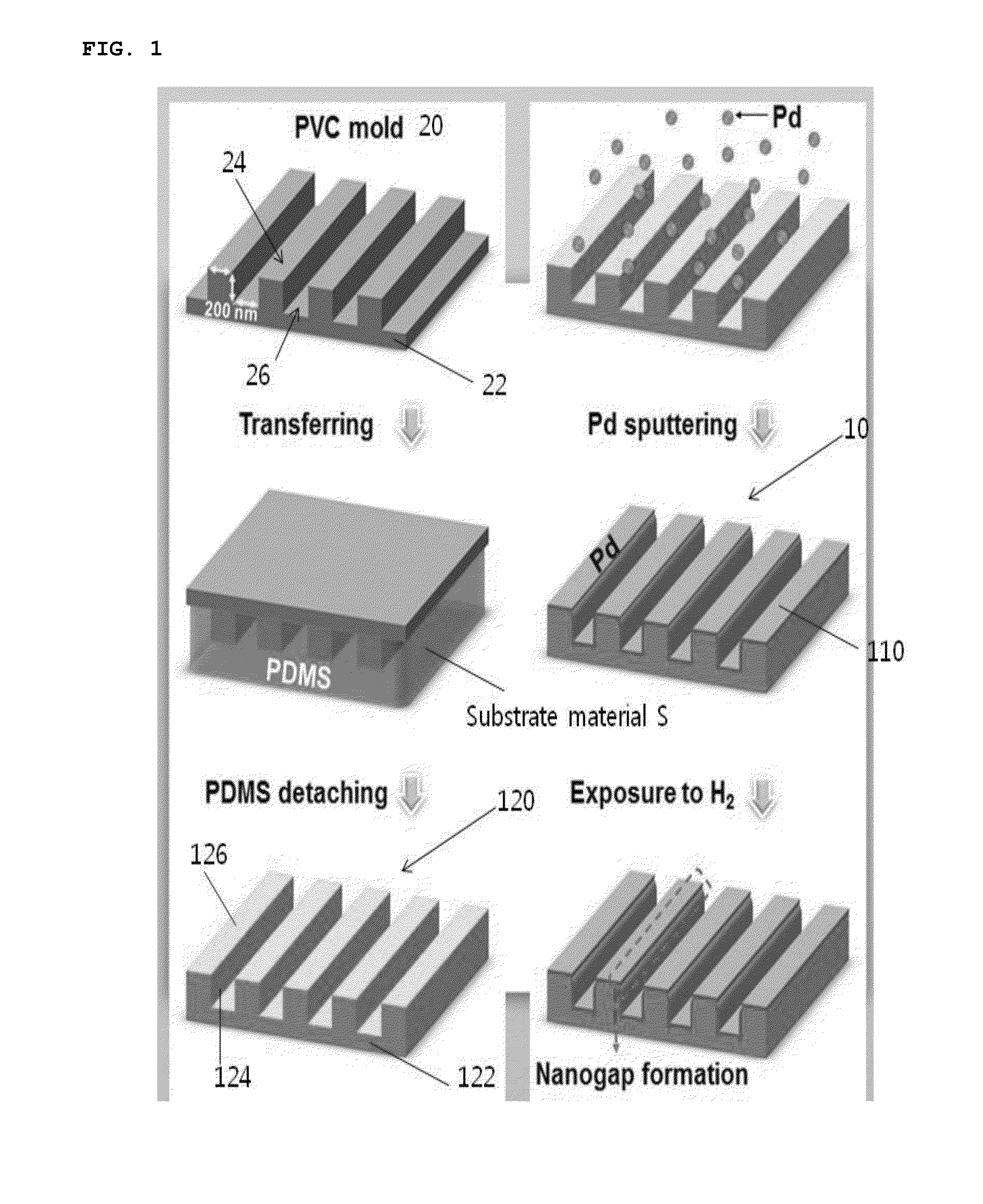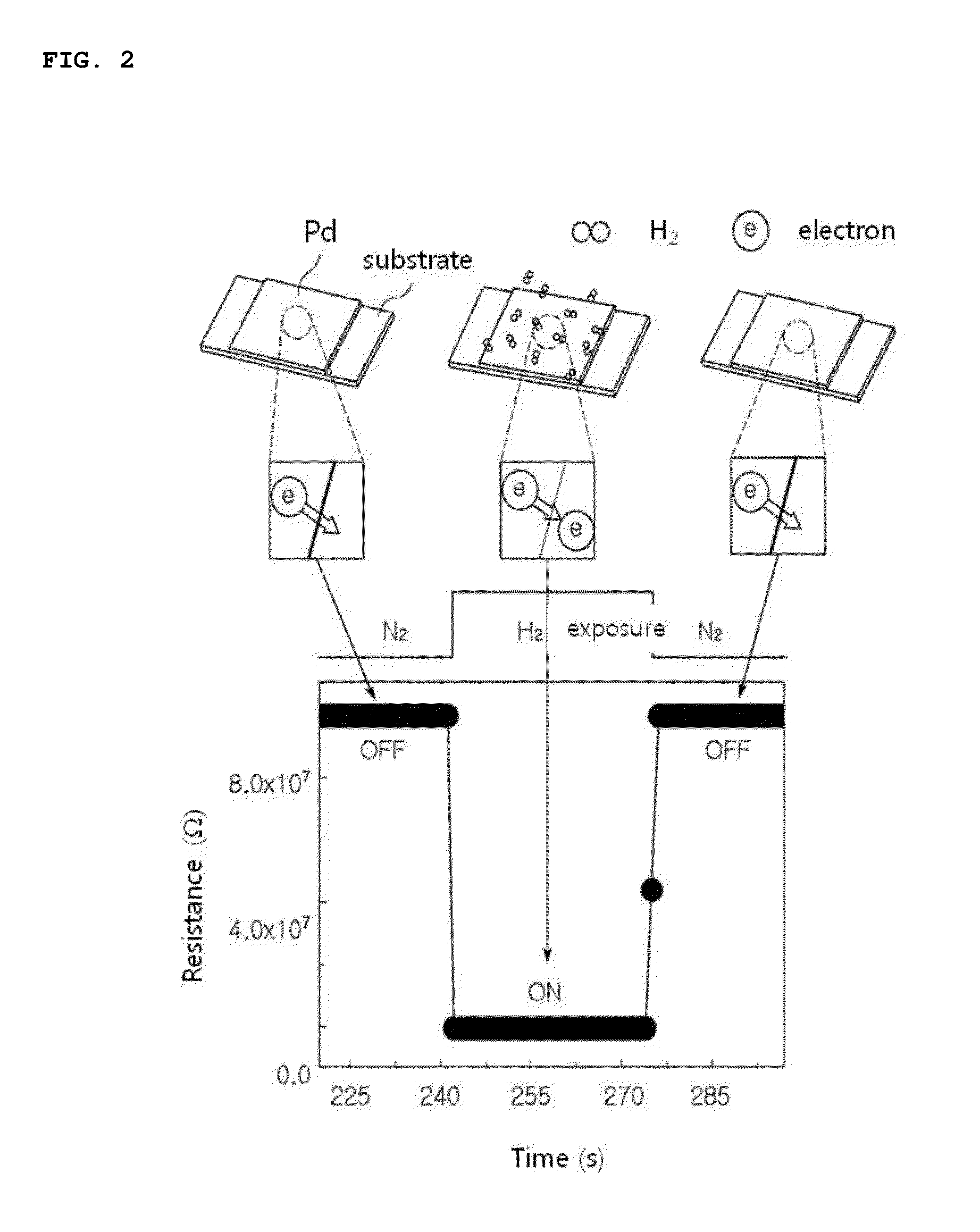Hydrogen Sensor and Method of Manufacturing the Same
a technology of hydrogen sensors and sensors, which is applied in the direction of instruments, vacuum evaporation coatings, specific gravity measurements, etc., can solve the problems of high operating temperature, no selectivity, and easy explosion of hydrogen gas in the actual li
- Summary
- Abstract
- Description
- Claims
- Application Information
AI Technical Summary
Benefits of technology
Problems solved by technology
Method used
Image
Examples
Embodiment Construction
[0057]Reference will now be made in detail to various embodiments of the present invention, examples of which are illustrated in the accompanying drawings. In the following, descriptions of technical parts that are well known in the art will be omitted. Although such descriptions are omitted, the characteristic features of the present invention will be apparent to a person having ordinary skill in the art from the following description taken in conjunction with the accompanying drawings.
[0058]FIG. 1 schematically shows a process of manufacturing a hydrogen sensor according to an embodiment of the present invention.
[0059]As shown in FIG. 1, according to an embodiment of the present invention, a hydrogen sensor is manufactured using nanoimprinting technology. Specifically, a mold 20 having a pattern corresponding to nanogaps that are to be formed in a hydrogen sensor substrate is prepared. According to an embodiment of the present invention, the mold 20 that is employed is a PVC mold ...
PUM
| Property | Measurement | Unit |
|---|---|---|
| Thickness | aaaaa | aaaaa |
| Thickness | aaaaa | aaaaa |
| Flexibility | aaaaa | aaaaa |
Abstract
Description
Claims
Application Information
 Login to View More
Login to View More - R&D
- Intellectual Property
- Life Sciences
- Materials
- Tech Scout
- Unparalleled Data Quality
- Higher Quality Content
- 60% Fewer Hallucinations
Browse by: Latest US Patents, China's latest patents, Technical Efficacy Thesaurus, Application Domain, Technology Topic, Popular Technical Reports.
© 2025 PatSnap. All rights reserved.Legal|Privacy policy|Modern Slavery Act Transparency Statement|Sitemap|About US| Contact US: help@patsnap.com



